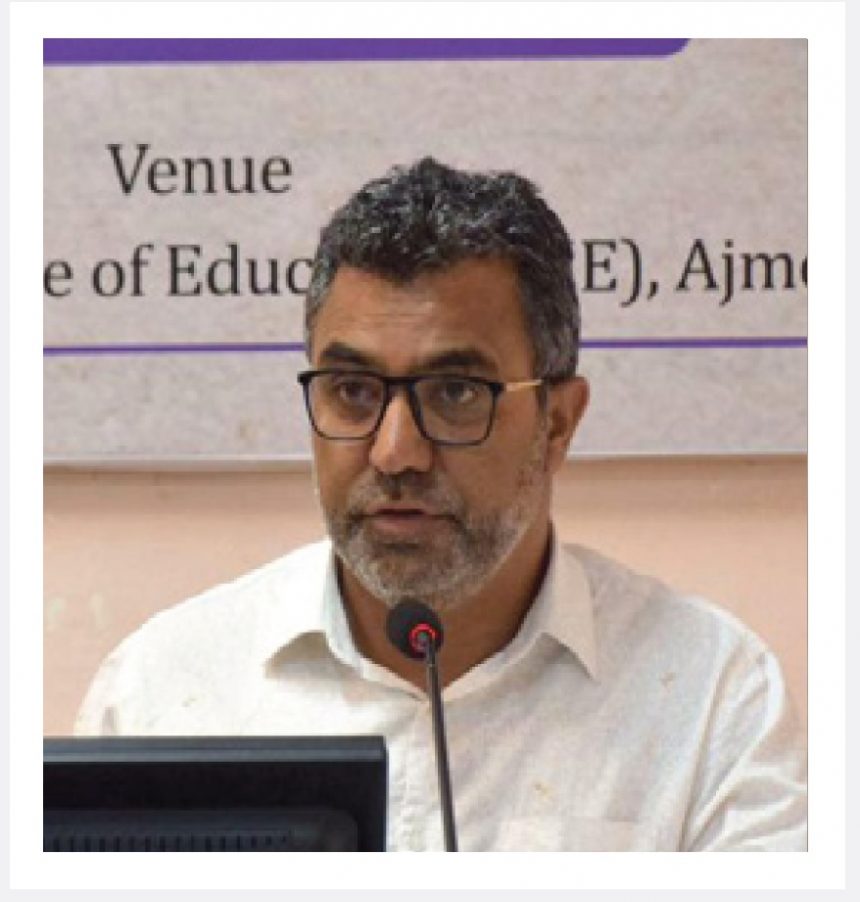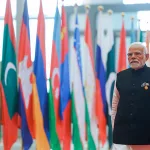Introduction
In the evolving educational landscape of Jammu and Kashmir, school leadership is undergoing a profound metamorphosis. The traditional paradigms of educational administration are being systematically replaced by more dynamic, holistic, and responsive leadership models. This transformation is not merely cosmetic but represents a fundamental reimagining of how educational institutions are conceptualized, managed, and driven towards excellence in light of NEP-2020.
The contemporary school leadership ecosystem in Jammu and Kashmir encompasses a diverse range of stakeholders: Complex heads, system leaders, principals at senior secondary level, teacher leaders, headmasters at secondary level, and head teachers in middle schools. These educational architects are increasingly recognized not just as administrative functionaries but as critical change agents responsible for driving institutional transformation after the advent of NEP-2020.The organizations like Oasis Jyotirdhar Movement, School Leadership Academy (SLA) at SCERT-Jammu and Kashmir deserve appreciation for this gradual transformation of School Leaders of Jammu & Kashmir from last three years.
The Complexity of Modern School Leadership
Recent comprehensive studies have illuminated the multifaceted challenges confronting school leaders in the region. A startling revelation emerges from these investigations: approximately 90 percent of school heads at different levels have candidly expressed significant deficiencies in their working practices, capacity building and the competencies to achieve desired levels of excellence.
The most prominent issue is the inability to effectively prioritize and delegate responsibilities. School leaders find themselves trapped in a labyrinth of administrative tasks, with nearly 75 percent of their productive time consumed by documentation, communication, data collection, and feedback reporting to higher authorities. This administrative burden directly compromises their primary educational leadership responsibilities.
Five Domains of Leader Development
The framework of leader development represents a holistic approach to educational leadership, poignantly designed to address the diverse challenges of contemporary school management. Setting direction emerges as the first critical domain, requiring school leaders to articulate a clear and compelling vision that transcends traditional administrative boundaries. This involves creating strategic roadmaps that align institutional objectives with broader educational goals, ensuring that every stakeholder understands and is committed to the school’s overarching mission.
Building relationships constitutes the second pivotal domain, recognizing that educational excellence is fundamentally a collaborative endeavour. School leaders must cultivate robust networks that extend beyond institutional walls, engaging with parents, community members, educational experts, and local stakeholders. These relationships are not merely transactional but transformative, creating ecosystems of mutual support, understanding, and shared educational aspirations.
The domain of developing people addresses the critical need for continuous professional growth and capacity building. School leaders are tasked with creating nurturing environments that support both individual and collective professional development. This involves designing targeted training programs, mentorship initiatives, and professional learning communities that enable educators to enhance their pedagogical skills, embrace innovative teaching methodologies, and remain adaptable in an ever-evolving educational landscape.
Developing the organization represents a systemic approach to institutional enhancement. School leaders must design and implement robust organizational structures that promote efficiency, transparency, and continuous improvement. This involves streamlining administrative processes, establishing clear communication channels, developing performance management systems, and creating adaptive organizational cultures that can respond quickly to emerging educational challenges and opportunities.
Leading the instructional programme is perhaps the most crucial domain, directly impacting student learning outcomes. School leaders must become instructional leaders who go beyond administrative management to actively shape and support high-quality educational experiences. This requires a deep understanding of curriculum design, pedagogical innovations, assessment strategies, and the ability to provide meaningful academic guidance and support to teachers and students alike.
Teacher Quality and Evaluation: A Critical Focus
The landscape of teacher quality and evaluation in Jammu and Kashmir needs to represent a multi-dimensional approach to educational excellence that transcends traditional assessment methodologies. At its core, this comprehensive framework recognizes that teacher effectiveness is not a static construct but a dynamic, continuously evolving process requiring a holistic evaluation mechanism. Curriculum coordination emerges as a fundamental element, demanding intricate alignment between prescribed educational standards, institutional objectives, and innovative pedagogical approaches. Teaching programme management becomes a critical strategic intervention, where school leaders scrupulously design, implement, and monitor instructional strategies that are responsive to diverse student learning needs, technological advancements, and emerging educational paradigms.
Systematic monitoring and evaluation constitute the backbone of this transformative approach, moving beyond punitive assessment models to create constructive, growth-oriented feedback mechanisms. These evaluations are not merely bureaucratic exercises but nuanced diagnostic tools that provide granular insights into teaching practices, identifying strengths, addressing potential improvement areas, and creating personalized professional development pathways. Professional development promotion is conceptualized as a continuous, integrated process that goes beyond conventional training workshops, encompassing mentorship programs, peer learning networks, action research opportunities, and exposure to cutting-edge pedagogical research and methodologies.
Fostering collaborative work cultures represents a revolutionary approach to institutional development, challenging traditional hierarchical and isolated teaching practices. By creating structured platforms for teachers to engage in collective knowledge creation, shared problem-solving, and collaborative curriculum design, educational leaders are fundamentally reimagining the professional ecosystem. These collaborative environments become laboratories of innovation, where collective expertise is leveraged to address complex educational challenges, develop contextually relevant teaching strategies, and create a culture of continuous learning and mutual professional support.
The evaluation framework itself is carefully calibrated to balance accountability with professional growth, integrating multiple assessment dimensions. Classroom observations provide real-time insights into pedagogical practices, teaching plan reviews offer systematic documentation analysis, inter-teacher meetings facilitate knowledge exchange, parent communications ensure community engagement, and data-driven performance assessments create objective measurement frameworks. Peer reviews and self-evaluation mechanisms introduce reflective practices, encouraging teachers to become active participants in their professional development journey.
By adopting such a comprehensive, nuanced approach to teacher quality and evaluation, school leaders in Jammu and Kashmir are not only expected to manage educational institutions but to actively cultivate dynamic, responsive, and innovative learning ecosystems that can adapt to rapidly changing educational landscapes.
Innovative Evaluation Mechanisms
The proposed evaluation framework represents a revolutionary approach to educational quality assurance, characterized by its comprehensive and multi-stakeholder methodology. By strategically integrating school leaders, senior staff members, and external expert panels, the evaluation process transcends traditional administrative boundaries, creating a robust, transparent, and holistic assessment ecosystem. School leaders serve as primary architects of this mechanism, bringing institutional context and strategic insights, while senior staff members provide nuanced understanding of internal dynamics and pedagogical practices. The inclusion of external expert panels ensures objectivity, introduces best practices from broader educational landscapes, and provides an independent, critical perspective that prevents institutional insularity.
The evaluation parameters shall be designed to balance accountability with professional growth, focusing on formative assessment that goes beyond mere performance measurement. This approach transforms evaluation from a potentially punitive process into a constructive developmental journey. Performance appraisal becomes a comprehensive diagnostic tool, identifying individual and systemic strengths and potential areas of improvement. Professional development planning emerges as a strategic intervention, creating personalized growth pathways that align individual aspirations with institutional objectives. The merit-based promotion pathways introduce transparency and motivation, ensuring that career progression is directly linked to demonstrated professional excellence and continuous learning.
Evaluation methodologies are deliberately diverse and interconnected, recognizing that teacher effectiveness cannot be captured through a single, linear assessment approach. Classroom observations provide real-time insights into pedagogical practices, revealing the nuanced art of teaching beyond theoretical frameworks. Teaching plan reviews offer systematic documentation analysis, ensuring alignment between planned and executed curriculum. Inter-teacher meetings create collaborative platforms for collective reflection and knowledge sharing. Parent communications introduce community perspectives, bridging institutional practices with societal expectations. Student performance data analysis provides objective, measurable insights into teaching effectiveness, while peer reviews and self-evaluation mechanisms encourage reflective practices, transforming teachers into active participants in their professional development.
Professional Learning Communities
The concept of professional learning communities represents a transformative approach to educational development that goes far beyond traditional professional development models. Championed by the State Council of Educational Research and Training (SCERT-JK) as a best practice in 2023, these communities are deliberately designed to create collaborative, supportive, and intellectually stimulating environments where educators can learn, grow, and innovate together.
Unlike conventional training programs that often treat professional development as a one-time event, professional learning communities establish ongoing, systematic processes of collective inquiry and continuous improvement. They create structured opportunities for teachers to engage in collaborative lesson planning, share best practices, analyze student performance data, and collectively develop strategies to address learning challenges.
These communities operate across multiple levels – within individual schools, across educational clusters, and within broader educational complexes – creating interconnected networks of professional learning and support. By breaking down the traditional isolation of teachers and promoting a culture of shared responsibility and collective expertise, these communities can become powerful mechanisms for systemic educational transformation.
Strategic Leadership and Holistic Development
The contemporary educational leadership paradigm in Jammu and Kashmir demands a proactive approach that transcends traditional administrative boundaries. Effective school leaders must emerge as strategic architects of institutional transformation, with an extraordinary capacity to identify and address institutional challenges before they evolve into systemic barriers. This proactive identification requires a combination of strategic foresight, data-driven analysis, and a deep understanding of the complex educational ecosystem. Developing innovative strategies to enhance learning culture becomes a critical intervention, necessitating leaders who can reimagine educational experiences, integrate technological innovations, flipped classroom pedagogies, and create adaptive learning environments that respond dynamically to emerging pedagogical trends and student needs.
The strategic imperatives of increasing student enrollment and minimizing dropout rates demand comprehensive, nuanced approaches that go beyond conventional recruitment and retention strategies. School leaders must develop holistic ecosystem interventions that address socio-economic barriers, create engaging learning experiences, develop 21st century skills, and demonstrate tangible value propositions to students and their families. Setting clear, measurable performance goals transforms abstract educational aspirations into concrete, achievable objectives, creating transparent frameworks that align institutional strategies with student outcomes. Implementing robust assessment mechanisms becomes a critical tool for continuous improvement, enabling data-driven decision-making and creating feedback loops that support ongoing institutional evolution.
Conclusion
The emerging leadership model represents a profound philosophical shift from traditional leadership paradigms, emphasizing character transformation over superficial personality development. This approach recognizes leadership as a comprehensive journey of personal and collective growth, fundamentally rooted in lifelong learning perspectives. Self and collective development are viewed as interconnected processes, where individual growth is intrinsically linked to institutional and community advancement. Future-oriented strategic thinking becomes a critical leadership competency, requiring leaders to develop adaptive capabilities, anticipate educational trends, and create forward-looking institutional strategies that can navigate complex, rapidly changing environments.







